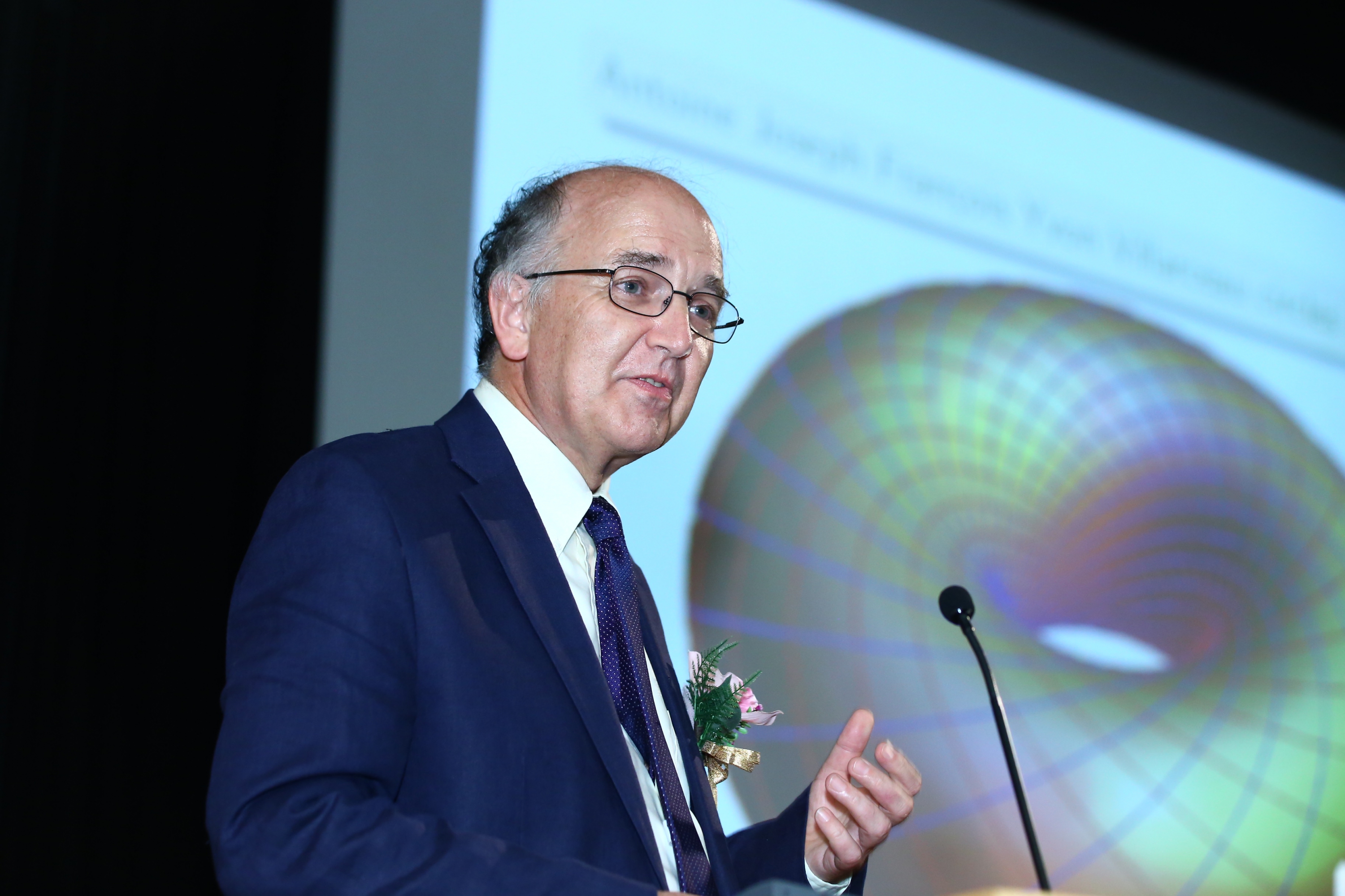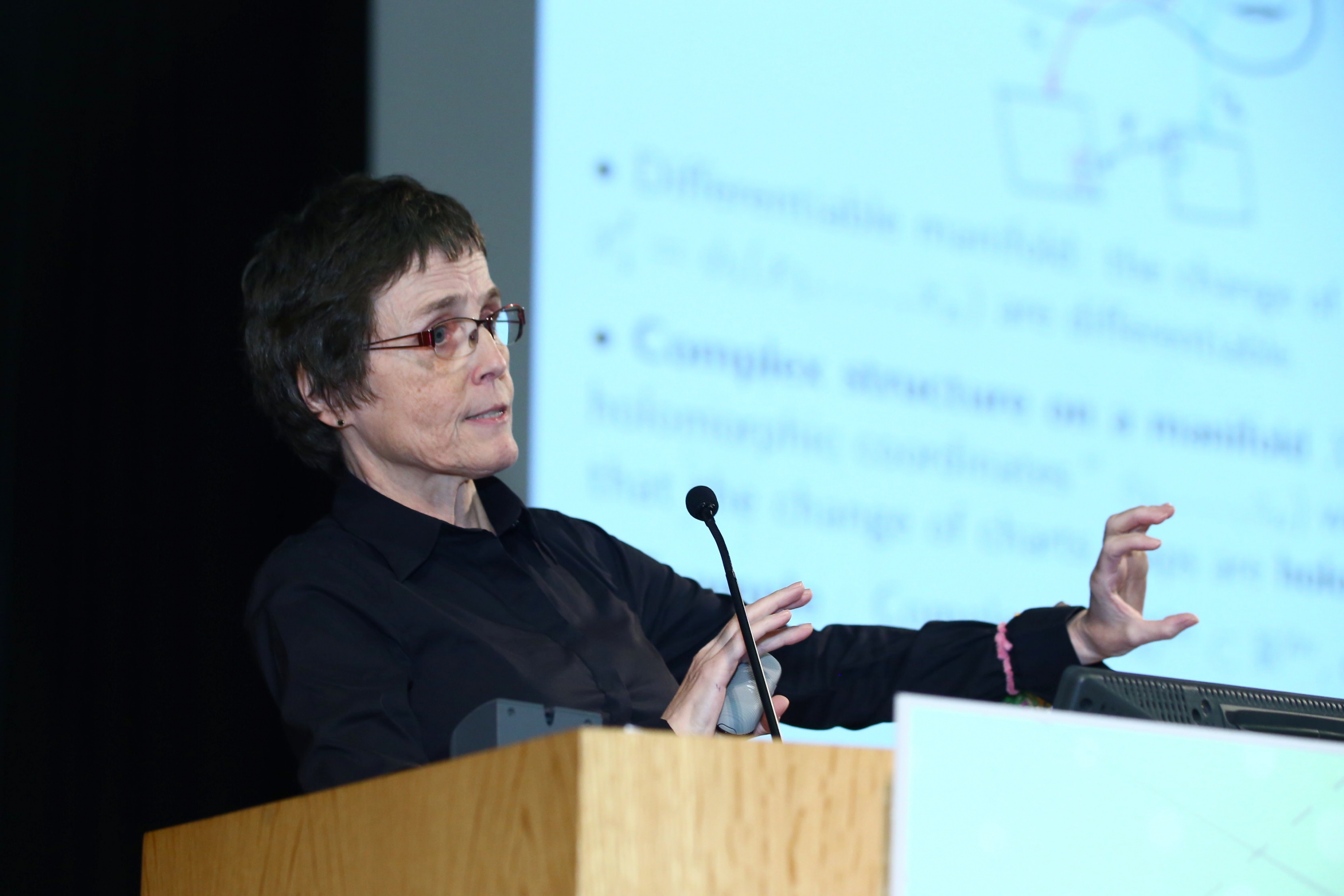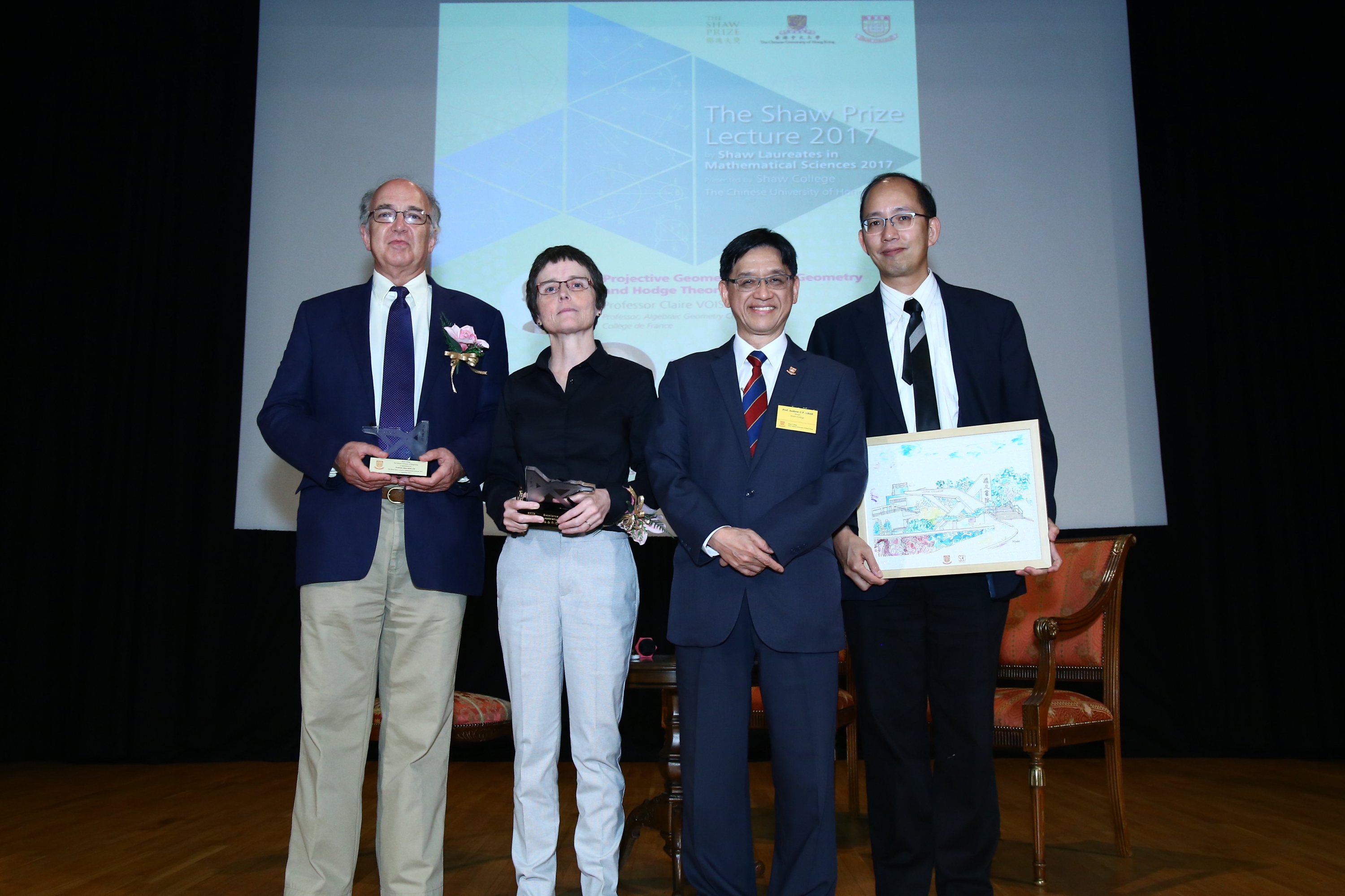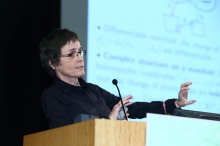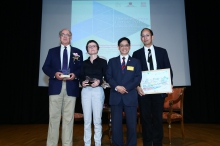CUHK
News Centre
CUHK hosts The Shaw Prize Lecture by Shaw Laureates in Mathematical Sciences 2017
Prof. János Kollár and Prof. Claire Voisin, Shaw Laureates in Mathematical Sciences 2017, delivered a lecture at Shaw College of The Chinese University of Hong Kong (CUHK) recently. Professor Kollár spoke on ‘Circles and algebraic surfaces’ and Professor Voisin on ‘Projective geometry, Kähler geometry and Hodge theory’. The lecture attracted over 400 people, including staff and students from CUHK and local universities, professionals in the field, as well as secondary school teachers and students.
The Shaw Prize in Mathematical Sciences was awarded to Prof. János Kollár, Professor of Mathematics, Princeton University, and Prof. Claire Voisin, Professor and Chair in Algebraic Geometry, College de France, for their remarkable results in many central areas of algebraic geometry, which have transformed the field and led to the solution of long-standing problems that had appeared out of reach.
Since ancient times, a central theme in mathematics has been the study of polynomials and their solutions. Algebraic geometry is the study of the properties of sets of solutions to polynomial equations in several variables. A simple example of such an equation is x2 + y2 + z2 = 1, the solution set of which is the surface of a sphere of radius 1.
As this example demonstrates, solution sets of polynomial equations, which are known as varieties, are geometric objects. Examining the interplay between the algebra and the geometry has turned out to be remarkably fruitful, and algebraic geometry is a major branch of mathematics, the study of which has profound consequences not just for algebra and geometry, but also for several other areas ranging from number theory to mathematical physics.
Two varieties are said to be birationally equivalent if they become the same after excluding a suitably small subset. Rational varieties are those that are birationally equivalent to ordinary n-dimensional space, for some n. Some of the most exciting advances in algebraic geometry over the past few decades have been in better understanding the birational classification of higher-dimensional varieties. Some of the most important breakthroughs have been in characterizing rational varieties. Both professors have made central contributions to this development.
Along with his work on birational classification, Professor Kollár’s most recent work stands out in a direction that will influence algebraic geometry deeply in the decades to come, as an important complement of the Minimal Model Programme; the definition and study of moduli of higher-dimensional varieties, which can be thought of as sophisticated geometrical structures whose points represent equivalence classes of these varieties. The importance of this area can be seen in the immense wealth of papers on the moduli problem in dimension 1, which today occupies topologists, combinatorialists and, perhaps most of all, physicists. Already, for surfaces the treatment of moduli is an extremely subtle and difficult problem. Professor Kollár’s ideas have almost defined the field of higher-dimensional moduli.
Among Professor Voisin’s major achievements is the solution of the Kodaira problem, which starts with the observation that every deformation of a complex projective manifold is a Kähler manifold (which roughly speaking means a geometric set that locally has a structure compatible with the complex numbers) and asks whether the converse is true. She found counterexamples: that is, Kähler manifolds that not only fail to be deformations of projective manifolds but are not even topologically equivalent to projective manifolds. Another of Professor Voisin’s pioneering accomplishments is the establishment of a new technique for showing that a variety is not rational, a breakthrough that has led to results that would previously have been unthinkable. A third remarkable result is a counterexample to an extension of the Hodge conjecture, one of the hardest problems in mathematics (being one of the Clay Mathematical Institute’s seven Millennium Problems); the counterexample rules out several approaches to the conjecture.
Biography of Prof. János Kollár
Prof. János Kollár was born in 1956 in Budapest, Hungary and is currently a Professor of Mathematics at Princeton University, USA. He obtained his Bachelor of Science from Eötvös Loránd University, Hungary in 1980 and his PhD from Brandeis University, USA in 1984. He was a Research Assistant at the Hungarian Academy of Sciences (1980–1981) and Junior Fellow at Harvard University, USA (1984–1987). He joined the University of Utah, USA, where he was successively Associate Professor (1987–1990), Professor (1990–1994) and Distinguished Professor (1994–1999). From 1999, he moved to Princeton University, USA as Professor and was appointed Donner Professor of Science since 2009. He is a member of the US National Academy of Sciences and a Fellow of the American Academy of Arts and Sciences.
Biography of Prof. Claire Voisin
Prof. Claire Voisin was born in 1962 in Val-d’Oise, France and is currently Professor, Algebraic Geometry Chair at Collège de France. She obtained a postgraduate teaching diploma in mathematics in 1983 and her PhD from Université Paris-Sud, France in 1986. She joined the Centre National de la Recherche Scientifique (CNRS) immediately after graduation in 1986 and continued her career there until 2016, and she was successively Researcher at the Université Paris-Sud in Orsay and then Senior Researcher and Directrice de recherche at the Institute de Mathematiques de Jussieu (CNRS / UPMC / Université Paris Diderot). She became a Professor at the Collège de France and has held the chair in Algebraic Geometry since 2016. She is a member of the Académie des sciences (France) and foreign associate member of the US National Academy of Sciences.
About The Shaw Prize
The Shaw Prize is an international award to honour individuals who are currently active in their respective fields and have recently achieved distinguished and significant advances, or have made outstanding contributions in academic and scientific research or applications, or has achieved excellence in other domains. The award is dedicated to furthering societal progress, enhancing quality of life, and enriching humanity’s spiritual civilization.
The Shaw Prize, established under the auspices of Sir Run Run Shaw in November 2002. It consists of three annual awards: the Prize in Astronomy, the Prize in Life Science and Medicine, and the Prize in Mathematical Sciences.


